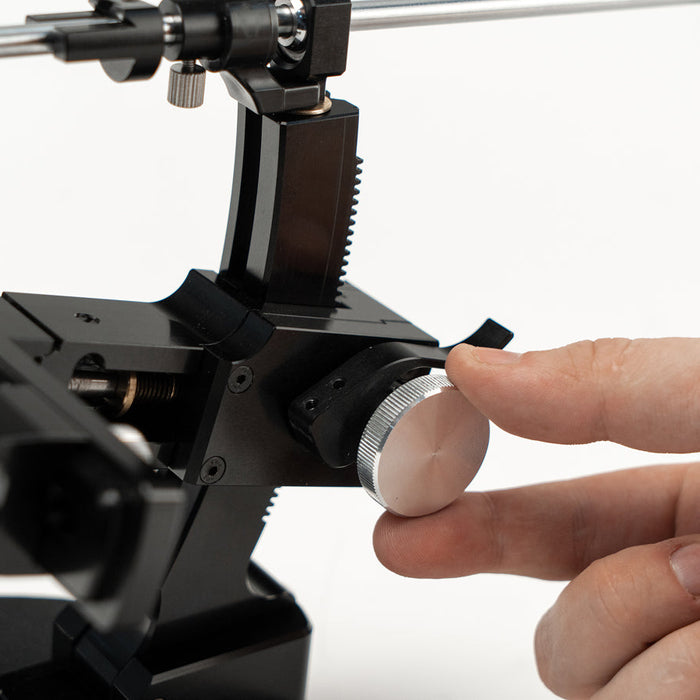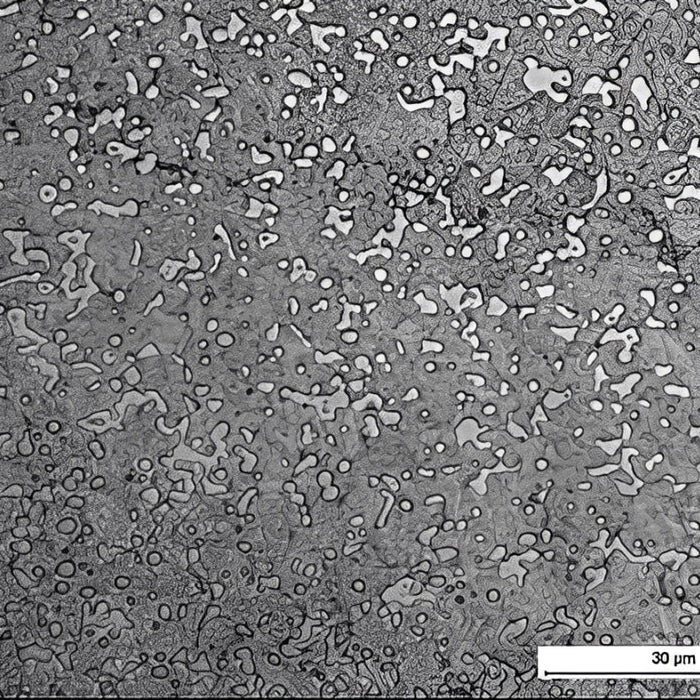3.1. The difference of the blade grind with and without a micro-bevel
Although each blade's quality and steel hardness is different, you only need to take a look at the following image to see that there will be a significant difference in the amount of removed steel when you sharpen a knife with a micro-bevel, compared to sharpening a knife without one.
 Image 3. What happens when you sharpen with and without a micro–bevel: 1 – chisel blade without a micro–bevel, 2 - approximate removal of steel over the entire bevel, 3 - removal of steel with creation of a micro-bevel.
Image 3. What happens when you sharpen with and without a micro–bevel: 1 – chisel blade without a micro–bevel, 2 - approximate removal of steel over the entire bevel, 3 - removal of steel with creation of a micro-bevel.
If we look at the cross-section of the blade of a chisel, it becomes clear what a normal bevel looks like after you sharpen it without a micro-bevel (1). The second picture shows the approximate amount of material that gets removed when you sharpen the entire bevel area (2). The third picture shows the approximate amount of steel that gets removed when sharpening with creating a micro bevel (3).
Creating a micro bevel on a fully sharpened blade takes some extra effort and a certain level of precision. However, there will be much less material removal when sharpening the micro bevel again, which saves considerable effort and prolongs blade life.
If we consider the blunting of a cutting edge as a process of rounding of its apex (picture 3.2), then the purpose of sharpening is to remove this rounding by reshaping the bevels planes. Sharpening knives without a micro bevel removes more material and takes much longer time with harder steels.
This technique is used for knives with very small thicknesses behind the edges, on hard steels and steels with large carbides to avoid chipping, and to make the geometry of the blade work when cutting. This is even more relevant and useful for softer and more ductile steels, especially for European-type knives. They often recommend using a honing hand tool, the musat, for this purpose.
You can only get good quality micro bevels with high precision equipment that offers angle consistency.
With a steep angle of bevels and a large thickness behind the edge, the difference between the bevels and the micro bevels angle should be about 5 degrees per side.
It is best to keep the difference in the angles of the bevels and micro bevels within 5-10 degrees, and the width of micro bevels in tenths of a millimeter.
To get the best perspective, you should examine the cross-section of a chisel blade (instead of double sided blades), which is an example of a blade exposed to heavy loads, and which micro bevels continually prove to be effective,
 Image 4. Schematic difference in the angles of a chisel with a micro bevel
Image 4. Schematic difference in the angles of a chisel with a micro bevel
The use of micro bevel is illustrated in image 4.
If you examine the area near the cutting edge of knives and the way you create a micro bevel on the knife blades, you will understand more about what happens when you sharpen knives.
 Image 5. Knife micro bevels area: 1 - bevels angle, 2 - micro bevels angle, 3 - cutting edge without micro bevels, 4 - cutting edge with micro bevels.
Image 5. Knife micro bevels area: 1 - bevels angle, 2 - micro bevels angle, 3 - cutting edge without micro bevels, 4 - cutting edge with micro bevels.
The essential ingredient in creating a micro bevel is the use of a sufficiently fine abrasive with a medium to fairly high hardness.
A burr is inevitable when you sharpen knives with back and forth movements. The correct way to remove a burr is with light, only forward movements of the abrasive to avoid breaking the burr and creating a blunt apex with jagged, sharp edges. When you remove the burr this way, you already create a kind of micro bevel. So it makes sense to create a micro bevel the right way.



 Image 1. The drawing of knife parts - thickness behind the edge and secondary bevels: 1 - blade width, 2 - thickness behind the edge, 3 - cutting edge, 4 - secondary bevels; A - sharpening angle of bevels.
Image 1. The drawing of knife parts - thickness behind the edge and secondary bevels: 1 - blade width, 2 - thickness behind the edge, 3 - cutting edge, 4 - secondary bevels; A - sharpening angle of bevels. Image 2.
Image 2. Image 3.
Image 3. Image 4.
Image 4. Image 5.
Image 5.

